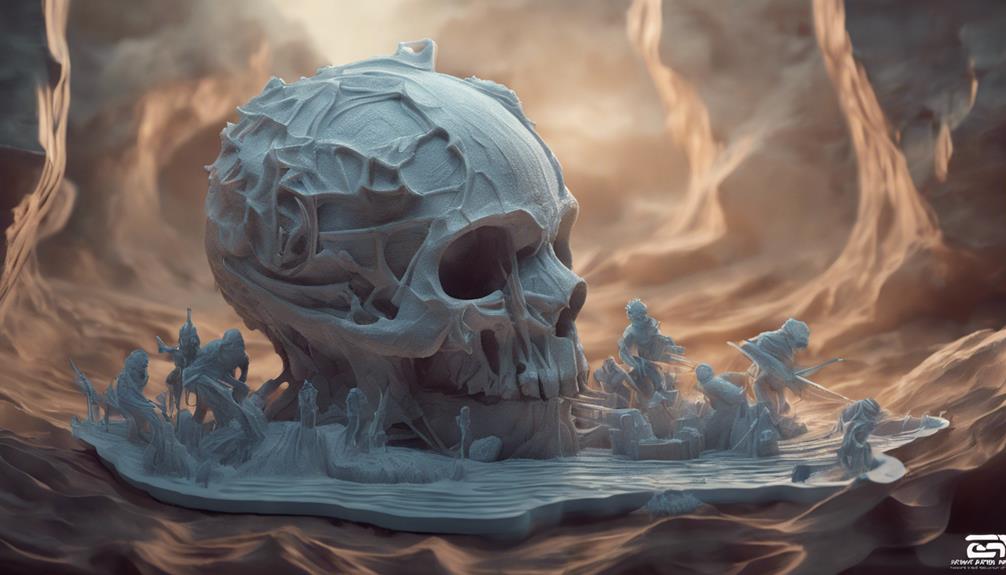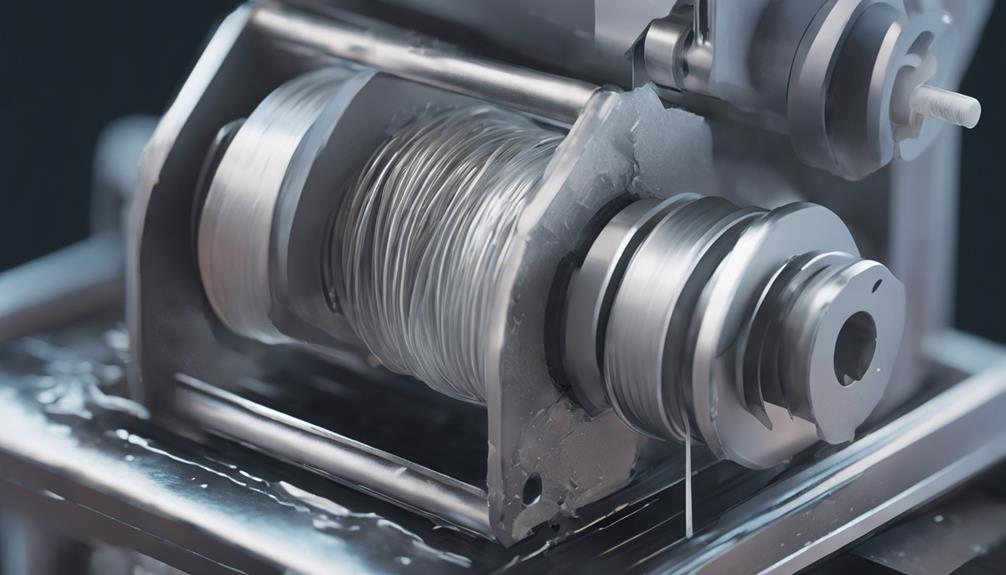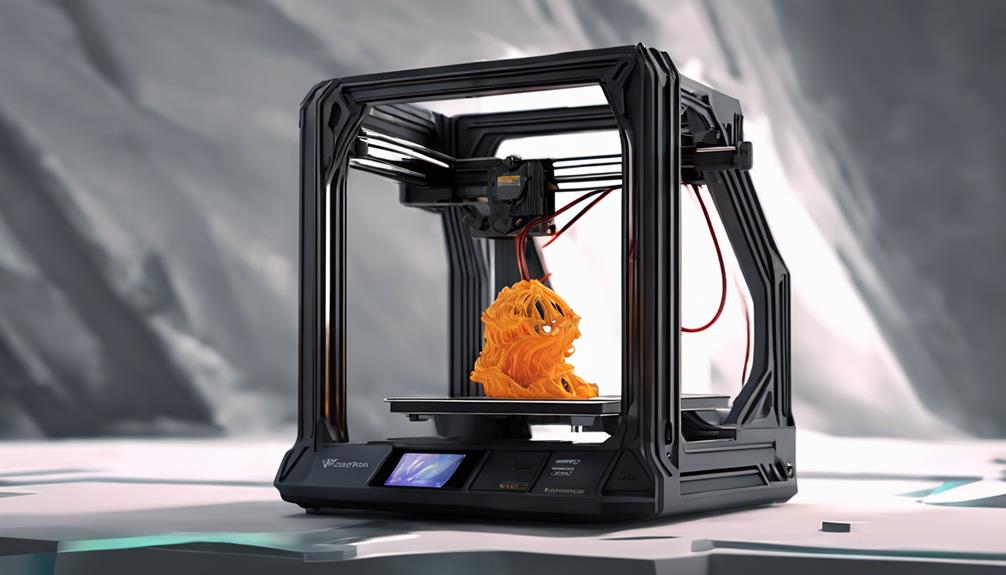When delving into flawless 3D prints with your Ender 3 (Pro/V2), focusing on retraction settings is crucial. By fine-tuning parameters like retraction distance, priming, count, and speed, you set the stage for pristine results. But there's more to it than just adjusting numbers – understanding the intricacies of retraction can make or break your print quality. So, let's explore the nuances of these settings and how they can elevate your printing game to new heights.
Importance of Retraction in 3D Printing

Understanding the significance of retraction in 3D printing is vital for achieving flawless prints with your Ender 3 (Pro/V2) printer. Retraction plays a pivotal role in relieving pressure in the hotend, which helps prevent stringing issues that can mar the surface finish of your printed objects.
By retracting the filament when the extruder moves between different parts of the print, you can guarantee that excess material doesn't ooze out and create unwanted imperfections. Mastering retraction settings is essential to producing high-quality prints with clean lines and intricate details.
Parameters Related to Retraction
Exploring the key parameters associated with retraction in 3D printing can greatly enhance the quality of your prints on the Ender 3 (Pro/V2) printer. Adjusting retraction distance, priming settings, maximum retraction count, minimum extrusion distance window, and retraction speed plays a significant role in preventing stringing issues and achieving a smooth surface finish.
For Bowden-type printers, an ideal retraction distance falls between 3-6mm, while direct drive systems may require a distance as low as 0.5mm. Set the maximum retraction count between 5 to 10 to prevent filament grinding, with a recommended retraction speed of 20mm/s for Bowden-type setups.
Carefully modify these settings based on test results to optimize your printing process.
Retraction Distance and Adjustment Tips

To enhance your 3D printing results on the Ender 3 (Pro/V2) printer, fine-tuning the retraction distance is crucial for preventing stringing issues and achieving smoother prints. The ideal retraction distance for Bowden-type printers typically falls within the range of 3-6mm. Conduct stringing tests to adjust this value accurately.
Direct drive systems may require a shorter 0.5mm distance. When modifying settings, proceed cautiously for the best outcomes. It's advisable to start with a lower distance setting and incrementally increase if necessary.
Maximum Retraction Count Guidelines
Adjusting your maximum retraction count within the range of 5 to 10 is vital for preventing filament grinding and preserving printing quality on your Ender 3 (Pro/V2) printer. Setting a value between 5 and 10 helps avoid excessive retractions, protecting both the filament integrity and the gear from potential damage.
The default Cura value of 100 is significantly high and should be adjusted to prevent unnecessary wear on the filament. By keeping the maximum retraction count within this recommended range, you can guarantee smoother printing processes and reduce the risk of issues such as clogs or extruder gear damage.
Pay attention to this setting as it plays an important role in maintaining printing quality and efficiency.
Retraction Speed and Recommended Settings

For peak performance in your 3D printing endeavors, make sure you set the retraction speed and recommended settings correctly. The retraction speed plays a vital role in preventing stringing issues and achieving excellent surface finishes on your prints. Starting with a speed of 20mm/s for Bowden-type printers is a solid foundation.
It's important to fine-tune this setting based on stringing test feedback. For Ender 3 (Pro/V2) printers, a retraction distance of 6mm, a maximum retraction count of 5, and a minimum extrusion distance window of 10mm are recommended. Enabling Combing Mode set to Within Infill can further enhance your printing quality.
Remember to adjust these settings carefully and conduct calibration tests for the best results.
Frequently Asked Questions
What Is the Impact of Retraction on Overall Print Quality?
Retraction plays a key role in your print quality. It minimizes stringing and enhances surface finish. Adjust retraction distance, speed, and count carefully. For Ender 3 (Pro/V2), start with 6mm distance, 20mm/s speed, and 5 count.
How Does Retraction Distance Affect Stringing Issues?
To tame stringing, tweak retraction distance. Tune it tenderly to thwart troubles. Trim it to 3-6mm for Bowden joy. Test, then tinker. For direct drives, a daintier 0.5mm may do. Tailor tweaks tactfully.
Why Is Maximum Retraction Count Important for Printing?
To prevent filament grinding and protect gear integrity, set your maximum retraction count between 5 to 10. Avoid excessive retractions by adjusting this value. Default Cura setting of 100 is too high, so keep it lower.
Can Retraction Speed Affect the Printing Process Significantly?
Oh, definitely! Retraction speed plays a vital role in your printing process. It directly impacts stringing and overall print quality. Adjust it carefully, starting around 20mm/s, and fine-tune based on your test prints for those perfect results.
How Does Retraction Optimization Benefit Miniature Printing?
Retraction optimization benefits miniature printing by reducing stringing, enhancing surface finish. Adjust retraction distance (3-6mm for Bowden, 0.5mm for direct drive), retraction count (5-10), and speed (start at 20mm/s). Fine-tune settings based on results for best prints.
Conclusion
By optimizing your Ender 3 (Pro/V2) for perfect prints through retraction settings, you can achieve flawless results with minimal stringing and clean lines.
Did you know that adjusting retraction settings can reduce filament waste by up to 20%?
Fine-tuning these parameters is crucial for maintaining printing quality and ensuring smooth surface finishes.
Take the time to calibrate your retraction settings for peak performance and impressive 3D prints.